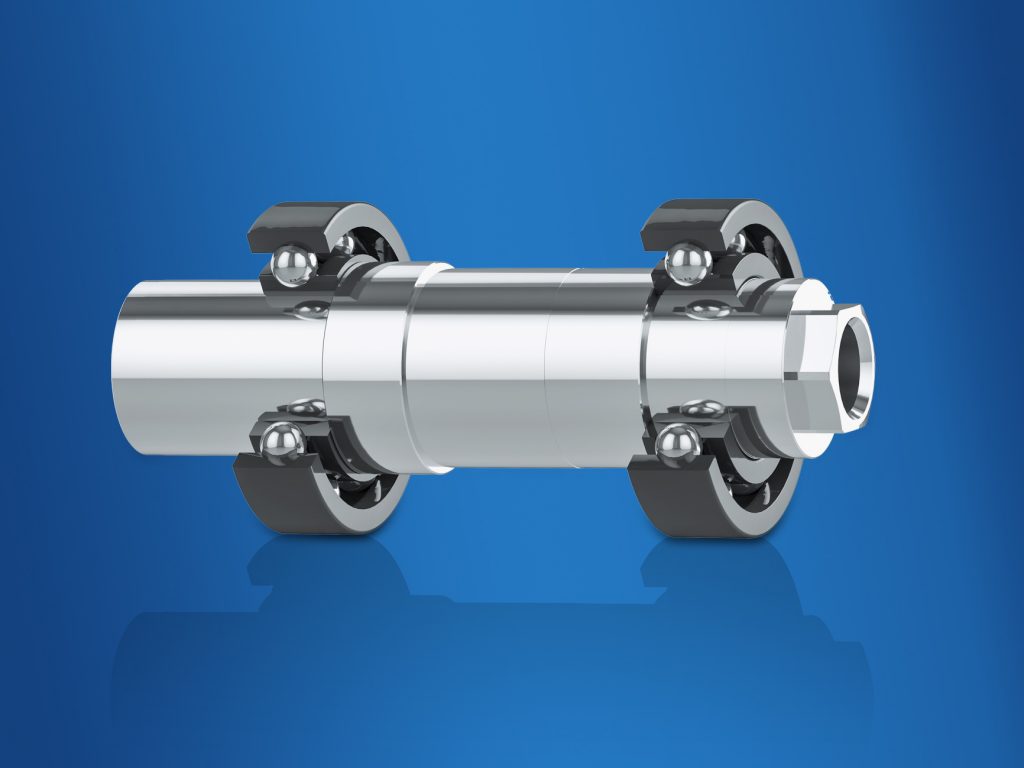
News
Products & Equipment
Technology
Baumer Hübner’s new HeavyDuty rotary encoders
June 22, 2020 By Baumer Hübner
 HeavyDuty rotary encoders from Baumer Hübner excel through a robust design with bearings at both shaft
ends. Photo courtesy of Baumer
HeavyDuty rotary encoders from Baumer Hübner excel through a robust design with bearings at both shaft
ends. Photo courtesy of Baumer Baumer Hübner developed HeavyDuty rotary encoders. What distinguishes a HeavyDuty rotary encoder and what options do they offer users?
What makes a rotary encoder “HeavyDuty”?
Precision: A rotary encoder must deliver reliable signals to allow users to precisely control and regulate drives and generators. Plant control systems utilize these signals for speed monitoring of drives or for position feedback of machine parts. To controllers, this information is the only way to get informed and intervene, for example, if a drive exceeds or falls below a defined speed limit. Since the machines and systems are usually very big—dock cranes, bucket-wheel excavators, rolling mills, garbage shredders—they could give the above-mentioned impression that precision does not matter much. That is a mistake. Particularly because heavy loads are moved with great force, small measuring errors could have extensive consequences, for example, when setting down a container weighing several tons.
Mechanical robustness: A HeavyDuty rotary encoder must be so resilient that it can withstand hard shocks, vibration, and forces on the rotary encoder shaft for many years. Exchanging rotary encoders is expensive, not because of pricing but because of installation in places difficult to access and the system being down for the time of exchange. HeavyDuty rotary encoders are distinguished by several characteristics: Double-sided bearing setup with generously dimensioned, largely spaced bearings at both shaft ends to compensate axial and radial load, robust and thick-walled housings, and durable protection of the inside components against shocks and vibration.
Tightness: HeavyDuty rotary encoders are usually deployed in dusty, soiled, and damp environments. For this reason, the HeavyDuty encoder housing must be well sealed, especially at critical, neuralgic points – the shaft and electrical connections. Further, in terms of potential contact to chemicals or salt water, a good corrosion protection through appropriate housing materials and coatings is mandatory.
Electrical robustness: HeavyDuty rotary encoders must be immune against electromagnetic fields. These are generated by live, unshielded cables routed nearby, which is a quite common situation in many applications. Without adequate shielding, the electronics in the rotary encoder might be destroyed or provide erroneous measuring signals. Another point are shaft currents caused by potential differences. They may burn the bearing lubrication, which results in bearing destruction. For all these reasons, the inside electronics of HeavyDuty rotary encoders must be electrically isolated from the ambiance of operation.
Flexible solutions for every application
There are various mounting options, whether as hollow shaft designs (through or non-through), cone shaft, or solid shaft with optional EURO flange B10 connection. If required, HeavyDuty rotary encoders, speed switches, and tacho generators can be combined in one single robust, space-saving unit to provide varied types of output signals measured at a single drive shaft all at once. Large encoders such as HOG 16 / 22 /28 from Baumer are used for maximum speed limit monitoring of large drive shafts under the most difficult conditions, such as in coal dust, corrosive air, or in the burning heat of steel mills.
For more information visit, Baumer Hübner.
Print this page